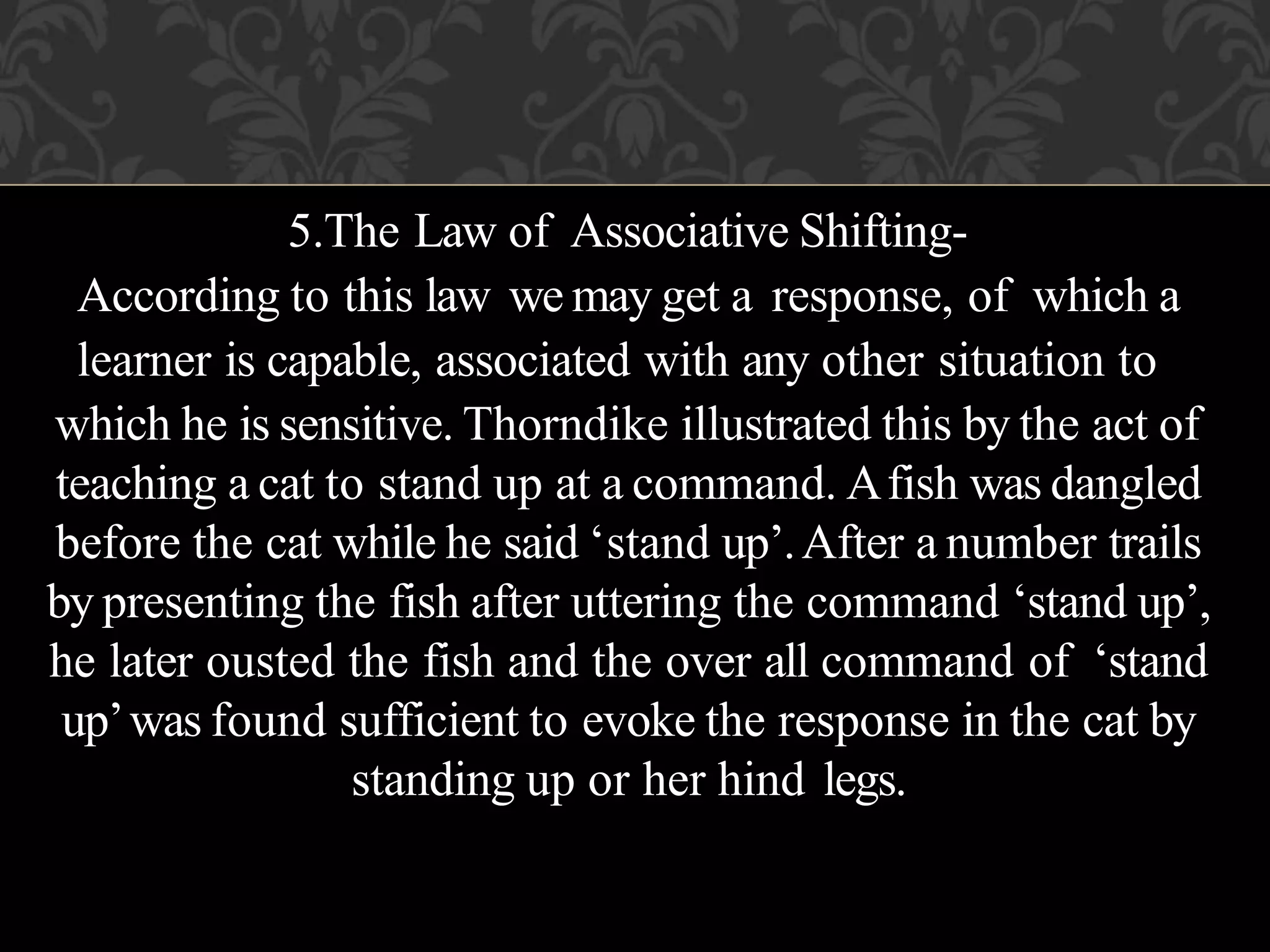Edward Lee Thorndike was an American psychologist known for developing the theory of connectionism. Some key aspects of his theory include:
1) Learning is based on forming associations between stimuli and responses through processes like trial and error.
2) The strength of associations is strengthened or weakened based on the Law of Effect - whether the response results in satisfaction or annoyance.
3) His classic experiment involved a cat trapped in a puzzle box that learned to escape through trial and error, demonstrating his theories of learning.






















